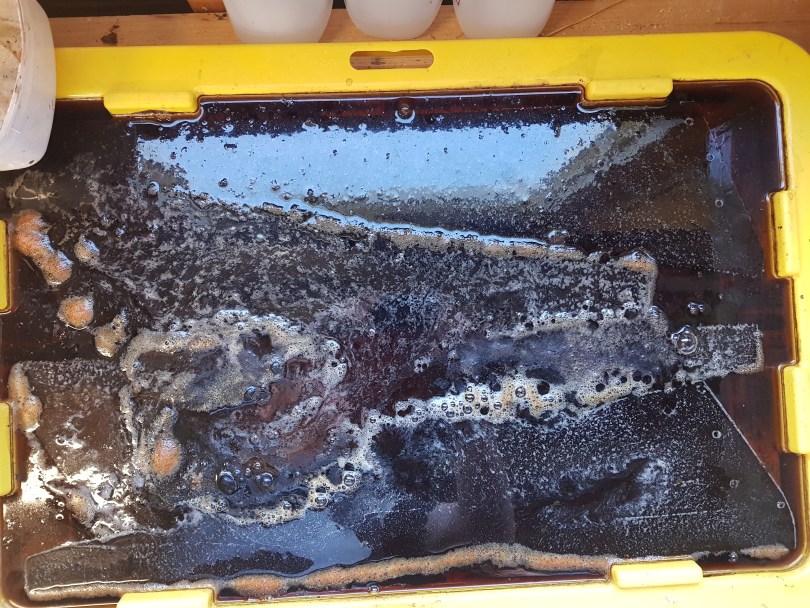I have found myself wanting to use a hand saw more and more of late. However I only own a hard-point hardware shop model. It has a with a very wide set to the teeth, which I find it hard to saw accurately with. Having had my back-sawing experience transformed after I re-cut and set the teeth on my tenon saw I thought it was time to organise a couple of nice hand saws for crosscut and ripping duties.
Over the past couple of months I have kept my eyes on the used market, and bought a set of five saws on Gumtree for $20. As with most purchases like this, it was out of town, so relied on photos and a conversation. Talking to the seller before purchasing it sounded as though he had surplus saws that he was using. He even mentioned that he’d just given them a sharpen. In hindsight, I probably heard what I wanted to hear. If I try this again though, I certainly know what questions to ask!
I was very excited when a week had passed (which is the typical time it takes for packages to arrive to me), and as if on cue, the saws arrived on Thursday afternoon just in time for the weekend, when I would be able to put them into service.
Eagerly unwrapping the package I noted that they were not users, but probably shed finds which had been de-rusted with a power sander. As per the photo below, you can see that any curves where the sander couldn’t reach were left in the original rusty condition.

A sorry state of affairs. Four rusty, scratched up saws. 
Disston circa 1880 
Disston circa 1955 – 1990 
Disston circa 1955 – 1990 
Disston circa 1955 -1990 
Nicholson
I ran my fingers over one of the saw’s teeth to check the sharpness, only to slice my finger open. That’s odd I thought, there was no catching of the skin as I would have expected, feeling more like a knife cut. Upon closer inspection however I understood. The “sharpening” the seller had spoken of referred to running a power sander or angle grinder along each edge so that it now resembled a toothed knife. Sigh.

Once I saw the teeth, any enthusiasm or excitement I had simply evaporated. I was so crestfallen I simply left them where they lay and went into the house. As they stood, they were totally unusable without removing the bottom 8 mm or so of the saw plate and cutting in new teeth. To make it worse, the seller had also sharpened the top/back/spine of the saws. Why? I have no idea, but it too would need to be cut/filed down.
The next day I decided I’d at least clean up the saw plates properly and then re-evaluate where to go from there. To do so, I took the handles off, and created a bath of white vinegar which the plates were submerged in for several days to loosen the rust.

Early the following week I cleaned up each of the blades to see how they had fared. The oldest Disston was still in pretty bad shape, so I cleaned up what I could and returned it to the bath. The rest of the plates cleaned up nicely, but all showed significant pitting, and not an inkling of any etching that may have existed at some stage.

After several more days I cleaned up the old Disston. The blade is so pitted, it is probably worthless.

So where does this leave me? I have limited appetite to spend hours cutting new teeth into saw plates that really aren’t worth the effort. I would sooner just go and buy a couple of hard point saws and re-tooth them instead. At least in the end the plates will be nice and clean. My preference has always been to have a crack at making a couple of saws from scratch, but have been unable to find source of 1095 stock more cost effective than a new saw from the hardware shop.
There are however two silver linings at the end of it all.
- I now have a collection of saw bolts.
- I have blade stock to make a lifetime supply of card scrapers from.

Lance
September 2019


One comment